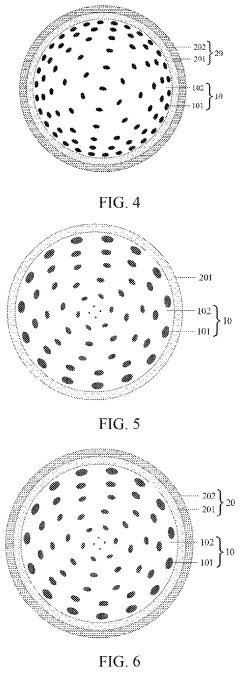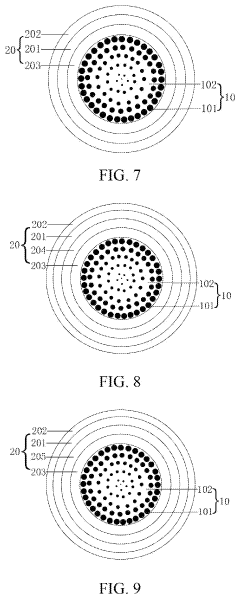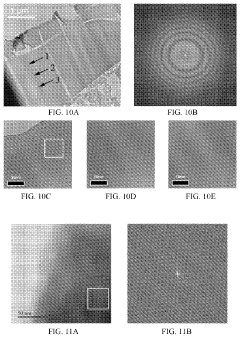Research on the development and application of silicon anodes for lithium-ion batteries - Eureka
OCT 8, 20243 MIN READ
Generate Your Technical Report in Patsnap Eureka
AI-Powered Innovation Solution Platform for R&D
Silicon Anode Development Goals
The primary objective is to provide a comprehensive overview of the development history and technological evolution trends in the field of silicon anodes for lithium-ion batteries. This section will delve into the key milestones and breakthroughs that have shaped the progress of this technology, shedding light on the driving forces behind its advancements. Additionally, it will clearly define the expected technological goals and targets that researchers and industry players aim to achieve in the future development of silicon anodes.
By establishing a solid understanding of the technology's background and objectives, this section lays the foundation for further analysis and exploration in subsequent sections of the report. It serves as a crucial starting point, providing context and direction for the overall assessment of silicon anodes' potential and future prospects in lithium-ion battery applications.
By establishing a solid understanding of the technology's background and objectives, this section lays the foundation for further analysis and exploration in subsequent sections of the report. It serves as a crucial starting point, providing context and direction for the overall assessment of silicon anodes' potential and future prospects in lithium-ion battery applications.
Market Demand for High-Capacity Batteries
- Growing Demand for High Energy Density
Lithium-ion batteries with higher energy density are in high demand for applications like electric vehicles and portable electronics, driving the need for advanced anode materials like silicon. - Increasing Adoption of Renewable Energy
The transition towards renewable energy sources, such as solar and wind power, requires efficient energy storage solutions, further fueling the demand for high-capacity batteries. - Expanding Consumer Electronics Market
The consumer electronics market, including smartphones, laptops, and wearable devices, continues to grow, necessitating batteries with higher energy density and longer lifespan. - Emerging Applications in Grid Storage
The integration of renewable energy sources into the grid requires large-scale energy storage systems, creating a market for high-capacity batteries with silicon anodes.
Current State and Challenges of Silicon Anodes
- Current Limitations
Silicon anodes face several challenges, including:
- Large volume expansion (up to 300%) during lithiation, causing mechanical stress and pulverization
- Continuous formation of solid-electrolyte interphase (SEI) layer, consuming lithium ions and electrolyte
- Poor electrical conductivity of silicon, leading to high internal resistance
- Technical Hurdles
Key technical hurdles that need to be overcome include:
- Mitigating volume changes and mechanical degradation during cycling
- Stabilizing the SEI layer and reducing lithium consumption
- Improving electrical conductivity and charge transport within silicon anodes
- Geographical Distribution
Research on silicon anodes is widely distributed globally, with major contributions from:
- United States (e.g., Stanford University, MIT, Argonne National Laboratory)
- China (e.g., Tsinghua University, Peking University, Chinese Academy of Sciences)
- Europe (e.g., Fraunhofer Institute, CEA, University of Cambridge)
- Japan (e.g., Toyota Central R&D Labs, University of Tokyo)
Evolution of Silicon Anode Technologies

Key Players in Silicon Anode Development
The silicon anode industry for lithium-ion batteries is rapidly growing, driven by the demand for higher energy density and longer battery life. Key players like Robert Bosch GmbH, StoreDot Ltd., Wacker Chemie AG, and Enevate Corp. are leading the way with advanced research and development, pushing the boundaries of silicon anode technology towards commercial viability.
StoreDot Ltd.
Technical Solution: StoreDot develops silicon-dominant anodes for lithium-ion batteries, enabling significantly faster charging times through nanomaterials and proprietary compounds.
Strength: Rapid charging. Weakness: High costs.
Enevate Corp.
Technical Solution: Enevate offers silicon-dominant composite anodes for ultra-fast charging, high energy density, improved safety, and longer cycle life in lithium-ion batteries.
Strength: High energy density and fast charging. Weakness: Scalability challenges.
Core Innovations in Silicon Anode Technology
Silicon-based anode material and preparation method therefor, and secondary battery
PatentPendingUS20230268494A1
Innovation
- The use of a silicon-based core that includes siox and silicon microcrystals dispersed in siox, with a gradually decreasing distribution density of the silicon microcrystals along the core to improve its performance. a shell layer, specifically a carbon layer, is arranged on the silicon-based core to further enhance the anode material's properties. the preparation method for the anode material includes a dynamic heat treatment step to obtain the silicon-based core, followed by the formation of the shell layer. the resulting anode material can be used in lithium-ion batteries to improve their overall performance.
Regulatory Landscape for Battery Materials
Silicon anodes have emerged as a promising alternative to conventional graphite anodes for lithium-ion batteries due to their high theoretical specific capacity. However, the large volume expansion of silicon during lithiation poses significant challenges. Current research focuses on nanostructured silicon, silicon-carbon composites, and prelithiation strategies to mitigate volume changes and improve cycling stability. Potential innovations include advanced nanostructures, novel binders, and electrolyte additives. Overcoming these challenges could enable high-energy-density batteries for applications like electric vehicles and grid storage.
the structure of the environmentally friendly knitted fabric provided by the present invention; figure 2 Flow chart of the yarn wrapping machine for environmentally friendly knitted fabrics and storage devices; image 3 Is the parameter map of the yarn covering machine
Login to View More Environmental Impact of Silicon Anode Production
Silicon anodes have emerged as a promising alternative to conventional graphite anodes for lithium-ion batteries due to their high theoretical specific capacity. However, the large volume expansion of silicon during lithiation poses significant challenges. Current research focuses on nanostructured silicon, silicon-carbon composites, and prelithiation strategies to mitigate volume changes and improve cycling stability. Potential innovations include advanced nanostructures, novel binders, and electrolyte additives to further enhance silicon anode performance. Overcoming these challenges could enable the development of high-energy-density lithium-ion batteries for applications like electric vehicles and grid storage.
the structure of the environmentally friendly knitted fabric provided by the present invention; figure 2 Flow chart of the yarn wrapping machine for environmentally friendly knitted fabrics and storage devices; image 3 Is the parameter map of the yarn covering machine
Login to View More If you want an in-depth research or a technical report, you can always get what you want in Patsnap Eureka TechResearch . Try now!



